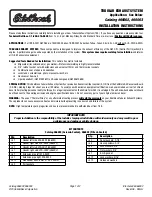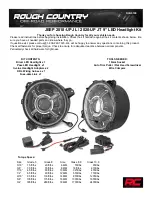
WHEELS AND TIRES
* Option/accessory.
545
Checking tire pressure
Correct inflation pressure helps improve driv-
ing stability, save fuel and increase the serv-
ice life of the tires.
Tire pressure decreases over time, which is
normal. Tire pressure also varies depending on
the ambient temperature. Driving on under-
inflated tires could cause the vehicle to over-
heat and lead to damage. Tire pressure affects
traveling comfort, road noise and driving cha-
racteristics.
Check the pressure in the tires every month.
Use the recommended inflation pressure for
cold tires to help maintain good tire perform-
ance. Under-inflated or over-inflated tires
could cause uneven tread wear.
Use an air pressure gauge and check the infla-
tion pressure on all the tires, including the
spare tire
4
, at least once a month and before
long trips. Volvo recommends buying a relia-
ble air pressure gauge, as the automatic
gauges provided at service stations may be
inaccurate.
WARNING
•
Under-inflation is the most common
cause of tire failure and may result in
severe tire cracking, tread separation,
or "blow-out," with unexpected loss of
vehicle control and increased risk of
injury.
•
Under-inflated tires reduce the load
carrying capacity of your vehicle.
Cold tires
Inflation pressure should be checked when the
tires are cold. The tires are considered to be
cold when they have the same temperature as
the surrounding (ambient) air. This tempera-
ture is normally reached after the vehicle has
been parked for at least 3 hours.
After driving for approximately 1.6 km (1 mile),
the tires are considered to be warm. If you
need to drive longer than that to inflate the
tires, check and record the inflation pressure
of the tires first and inflate accordingly when
you arrive at the pump.
When the ambient temperature changes, so
does the inflation pressure. A 10-degree tem-
perature drop causes a corresponding drop in
inflation pressure of 1 psi (7 kPa). Check the
inflation pressure of the tires regularly and
adjust to the correct pressure, which can be
found on the vehicle's tire information decal or
certification label.
If you check inflation pressure when the tires
are warm, you should never release air. The
tires become warm after driving and it is nor-
mal for warm tires to have an inflation pres-
sure above the recommended pressure for
cold tires. A warm tire with an inflation pres-
sure equal to or under the recommended pres-
sure for cold tires could be significantly under-
inflated.
Related information
•
Adjusting tire pressure (p. 546)
•
Recommended tire pressure (p. 547)
•
Tire pressure monitoring system
•
4
Not available in all models.
Summary of Contents for S60 Twin Engine 2020
Page 1: ...XC60 T W I N E N G I N E OWNER S MANUAL...
Page 2: ......
Page 17: ...15 INDEX Index 667...
Page 18: ......
Page 19: ...OWNER S INFORMATION...
Page 28: ......
Page 29: ...YOUR VOLVO...
Page 45: ...SAFETY...
Page 85: ...DISPLAYS AND VOICE CONTROL...
Page 156: ......
Page 157: ...LIGHTING...
Page 170: ......
Page 171: ...WINDOWS GLASS AND MIRRORS...
Page 188: ......
Page 189: ...SEATS AND STEERING WHEEL...
Page 205: ...CLIMATE CONTROL...
Page 237: ...KEY LOCKS AND ALARM...
Page 272: ...KEY LOCKS AND ALARM 270 Related information Alarm p 268...
Page 273: ...DRIVER SUPPORT...
Page 385: ...HYBRID INFORMATION...
Page 402: ......
Page 403: ...STARTING AND DRIVING...
Page 471: ...AUDIO MEDIA AND INTERNET...
Page 537: ...VOLVO ON CALL...
Page 539: ...WHEELS AND TIRES...
Page 570: ......
Page 571: ...LOADING STORAGE AND PASSENGER COMPARTMENT...
Page 590: ......
Page 591: ...MAINTENANCE AND SERVICE...
Page 654: ......
Page 655: ...SPECIFICATIONS...
Page 668: ......
Page 685: ......
Page 687: ...TP 28799 English USA Canada AT 1917 MY20 Copyright 2000 2019 Volvo Car Corporation...
















































